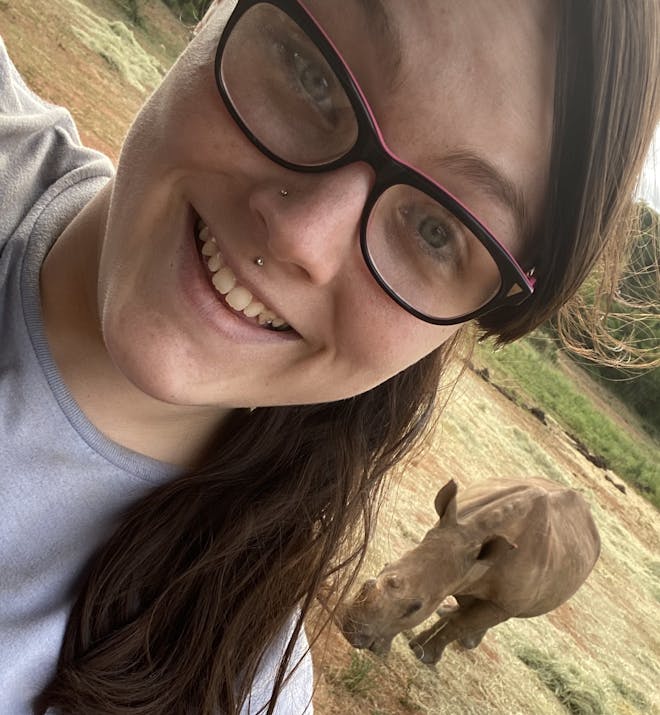
My time with ACE and Care for Wild was very well spent! African Conservation Experience (ACE) was always great about answering my questions and helping me in any way along the journey to South Africa. I was able to spend one week at Care for Wild Rhino Sanctuary.
I want to say first thing, if you are looking to touch animals and work hands-on with animals, this is not the program for you. This is real conservation, and is very hands-off except for when feeding the baby rhinos a couple times a day. It is hard work that is very rewarding, so don’t expect to cuddle everything all day, because these animals are to be rehabilitated.
Once I arrived in Johannesburg, the ACE team was there to greet me. We waited a few minutes for the other volunteers arriving to join us, and then we settled down at a café in the airport. We chatted for a while, had breakfast and got any other questions answered. They helped point us in the direction to get local money and sim cards for your phone if needed. They then checked us into the shuttle service we would be taking. It was a few hours from the airport to the nearest city by the sanctuary. Within that city we were met by the Care For Wild team who then transported us to the reserve, about another half hour away.The project staff were wonderful people to chat with and ask questions about South Africa.
Upon arriving to Care for Wild we signed paperwork, went over rules, were shown where the buildings and the cabins were and what the days would look like. A typical day included waking up around 5.30am, meeting with staff at 6.15 am. From there, we would prepare bottles for the baby Rhinos and feed them, clean their enclosures and tidy up their area in the morning. Then there was breakfast and some break time, after that, down again to bottle-feed babies before lunch. After lunch, there was another little break before feeding the afternoon bottles. After the afternoon bottles is where you would do other activities or learning sessions.
In my time there I was able to witness a Python being released back into the wild, went on multiple game drives through the sanctuary to see the bigger Rhinos in the protected zones. Also saw Giraffe and a baby Giraffe, Wildebeest, Warthogs and their babies, Baboons, Nyala, and during a night drive I saw a white-tailed mongoose for a brief second. We learned the stories behind many of the animals there on these drives and learned a lot about different animals in general.
They have Lions and Hippos that are residents in the sanctuary. While I was there, they had baby Duikers that had come in for care, so we were able to help support them as well with bottle feeding. I also had the opportunity to travel to the nearby community and help brainstorm ideas for their community garden. I was shown poaching documentaries, videos about the animal’s history and how they arrived at Care for Wild. The history on Care for Wild was also presented and was fascinating to learn. We were shown a very informative slide show about Hippos which was one of my favourite presentations. I also had the pleasure to view the river that flows through the sanctuary and see different parts of that.
Sunday is a more down day, you complete the morning tasks and then are able to go into town with the other volunteers to the local mall. There you can shop and grab some food from the food court. Also on the day I arrived, I did not get to see because I arrived after, but they tried to artificially inseminate a couple of the female While Rhinos. This was the first time this had been done for Southern White Rhinos, so that was very interesting to hear about. I was able to learn and do so much in my one week there! I went in January 2020 which was the middle of their summer... It was hot and humid! But there is a pool to cool off in, and I will say summer was well worth it. EVERYTHING was lush and green since it is their rainy season, and there were more baby animals out.
Care for Wild is not open to the public, the only way to visit is to volunteer. If you want to help conservation efforts, experience working in conservation, learn about animals, visit Africa and work hard, then this is the program for you! Everyone at Care for Wild has definitely earned my utmost respect. There is a lot of time and effort going into keeping these animals safe. The staff were wonderful about answering questions and they were always interested in educating us in any way possible. I had the pleasure of working with many people. Thank you all for making my time at Care for Wild and South Africa so special!







